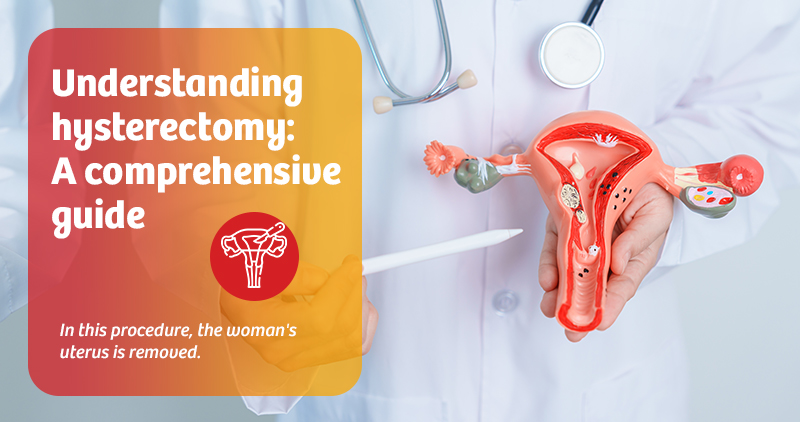

By Dr Ankita Jain
Consultant Obstetrics and Gynaecology
Dec 31 , 2024
A hysterectomy is a surgical procedure. In this procedure, the woman's uterus is removed. It's one of the most common surgeries performed on women, typically recommended when other treatments for uterine conditions have not been effective. While it's a routine procedure in many cases, it can still be life-changing, with physical, emotional, and psychological implications. This blog post will explore the different types of hysterectomies, the reasons for having one, the procedure itself, and what to expect during recovery.
A hysterectomy is the removal of a woman's uterus and sometimes other reproductive organs, such as the cervix, ovaries, or fallopian tubes. It is usually performed under general anaesthesia and can do through the abdomen, the vagina, or by using minimally invasive techniques like laparoscopy (keyhole surgery).
There are several different types of hysterectomies, depending on the organs removed:
There are many reasons why a woman might need or choose to have a hysterectomy. Some of the most common reasons include:
The hysterectomy procedure can vary based on the surgery type and the patient's health. Generally, there are three approaches:
The abdominal hysterectomy is the traditional method involving a large incision in the abdomen to remove the uterus. It is generally used when the uterus enlarges or in cases with complications that make other methods unsuitable.
This technique involves removing the uterus through the vagina. It typically results in a shorter recovery time and less scarring than abdominal surgery.
In a minimally invasive procedure, several small incisions are made in the abdomen through which a camera and surgical instruments are inserted. It's often used for less complicated cases and offers quicker recovery.
Like any surgery, hysterectomy comes with certain risks and potential complications, including:
While the procedure is generally safe, women should discuss the potential risks with their healthcare provider.
Recovery from a hysterectomy depends on the type of surgery performed and the woman's general health. Most women can expect to stay in the hospital for 1-2 days after the surgery. The overall recovery time varies, but typically:
During recovery, it's essential to:
Some women experience emotional changes post-surgery, such as sadness, grief, or even a sense of loss. It is expected, as the surgery can mark the end of reproductive years. Support from friends, family, and healthcare professionals can be crucial in navigating these emotional adjustments.
A hysterectomy can be a life-changing experience, and it's essential to consider the long-term impacts. For example:
Menopause: If the ovaries are removed during a hysterectomy, the woman will enter immediate menopause, leading to symptoms such as hot flashes, night sweats, mood swings, and vaginal dryness. Hormone replacement therapy (HRT) is often recommended to help manage these symptoms and balance hormone levels.
Sexual health: Many women worry about how a hysterectomy will affect their sexual health. While the procedure does not directly affect sexual function, the psychological and emotional impact can be significant. Some women report a change in sexual desire or pleasure, while others experience improved sexual health if they were previously suffering from pain or heavy bleeding.
Urinary and bowel health: A hysterectomy can sometimes affect bladder and bowel function, especially if the surgery involves removing surrounding tissues. Pelvic floor exercises and physical therapy may help restore function.
Fertility: A hysterectomy eliminates the possibility of pregnancy, which can be emotionally challenging for women who wish to have children. For women who still have their ovaries, though, egg harvesting or assisted reproductive technologies may be options for preserving fertility before the procedure.
A hysterectomy is a major surgery that can offer significant relief from various gynaecology conditions. However, it's not a decision to be taken lightly, and it should be made after carefully considering all available treatment options. If you're facing the prospect of a hysterectomy, take the time to talk with your doctor about your concerns, expectations, and any emotional or physical challenges you may encounter. At KD Hospital, we have a special wing called Blossom, where a dedicated team of experienced doctors with cutting-edge technology work together.